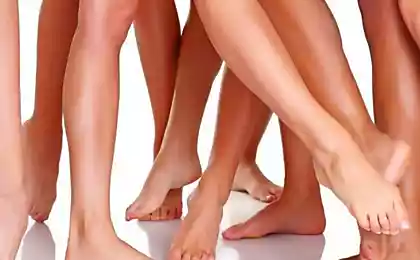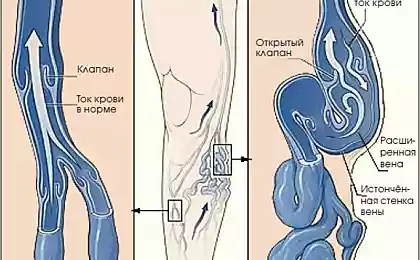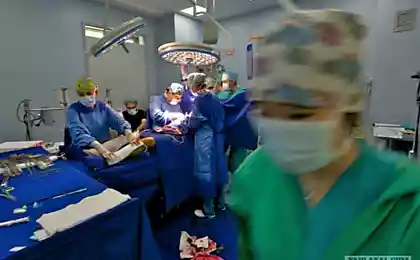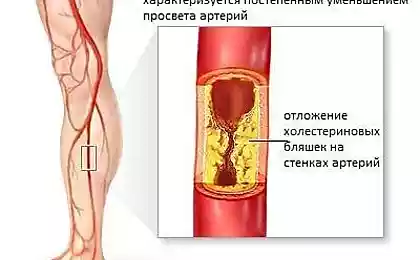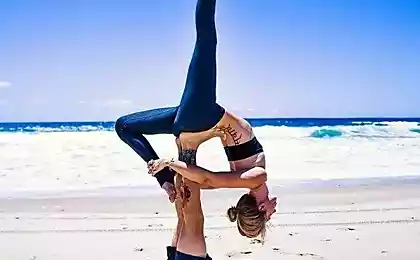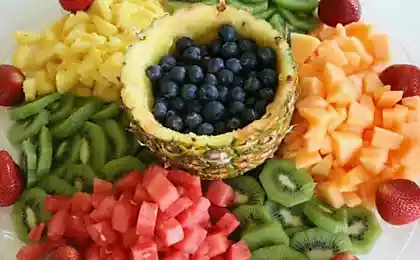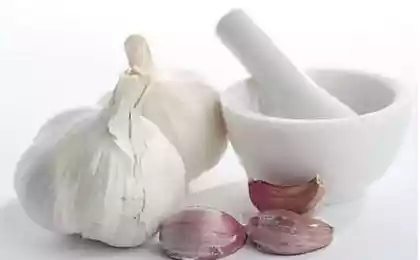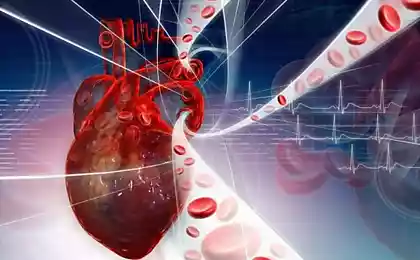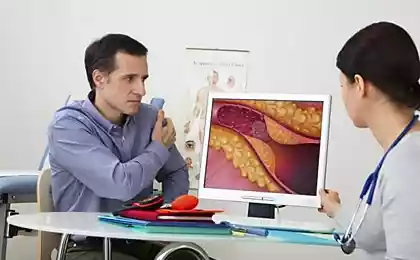606
Need to know: How to improve the condition of vessels
The vessels is the transport system of our body. They deliver to cells and tissues blood rich in oxygen, and deduce from them the products of metabolism and toxins.
In addition, the current blood through the vessels, warms our body and maintains the body temperature at a constant level.
The important role of vessels in the life leads to the fact that we need to take care of them throughout life.
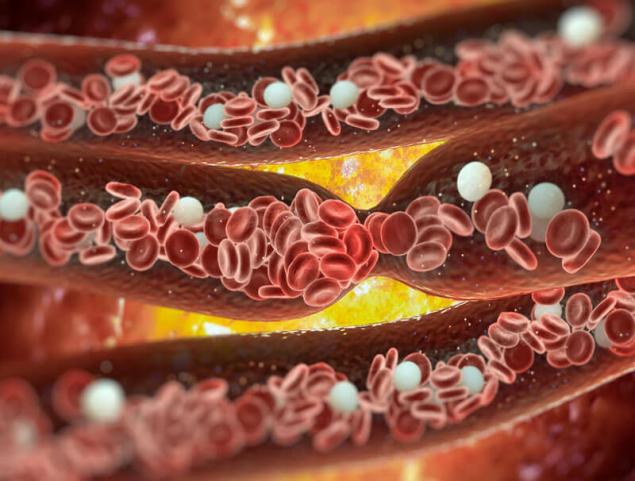
What vessels are in the body?
We will not go into anatomical detail, only outline the main features of each type of vessels. So, in the body are:
• Artery: these vessels have the largest cross section and are considered the backbone. According to him the blood, rich in oxygen, reaches all the cells. The walls of the arteries flexible and elastic: it is necessary to ensure the smooth flow of blood. In these vessels, the flow velocity maximum, so their walls are also very durable. The largest artery in the body is the aorta, it serves as a conduit of blood to the upper and lower part of the trunk.
• Vienna. These vessels provide the blood containing carbon dioxide and various metabolic products. Thanks to them, the cells are also exempt from toxins. The flow of blood in the veins is much slower than in the arteries. This is ensured by their structure: walls of the veins are softer than the walls of the arteries. In addition, the walls of the veins have special valves that prevent blood from flowing. This is useful when part of the blood is required to Deposit with the redistribution of blood flow.
• The capillaries. They represent the terminal branches of arterial and venous circulation. Thin and small capillaries go directly to the cells and tissues, where the process of gas exchange. The capillary network of the body is very wide: its length is more than 100, OOO miles. During the day, they are about 85, OOO liters of blood.
• The lymphatic vessels. This kind of blood vessels carries not blood, but lymphatic fluid. Lymph is needed in order to return different substances (salts, proteins, water and other) from the cells back into the blood. Lymphatic vessels vary in diameter, and the largest of them on the walls there are valves (like veins) that prevent the backflow of liquid. The walls of lymphatic vessels soft, because lymph — a viscous liquid, which flows relatively slowly.
These types of vessels provide most of the vital processes associated with the transport of oxygen, carbon dioxide and biologically active substances.
What can happen to the vessels?
The normal structure of the wall protects vessel from small injuries. Of course, to violate its integrity, but it is necessary to apply stress from the outside.
But there are times when the different pathological processes of the vascular wall thinner, making it less elastic and fragile. This can lead to numerous adverse consequences.
For example, the container may rupture from too much pressure current it blood. Most often this occurs to the arteries. If the damaged vessel, it causes bleeding. The severity of the consequences in this case depends on the extent of bleeding and its location. But about all under the order.
If there is a rupture of a large vessel, e.g. the femoral artery, the bleeding will be very strong. If you do not stop the blood, the person will die within minutes. It doesn't matter where it happens, "leak": in any case, the risk of death is very high.
If burst a small vessel or capillary, the situation may develop in two ways. When broken vessel in the body, appears very familiar to all of us the phenomenon of a bruise. It represents the blood that has accumulated in the subcutaneous tissues. As a rule, such lesions are not dangerous and are of themselves, when the vessel wall is restored.
Much worse, if a small vessel bursting in the brain. The cells of the nervous system and brain, including very sensitive. Even a small amount of blood streamed lead to their death. This is what happens in hemorrhagic strokes, and hematomas in the brain. That part of the brain, which was blood, dies. Consequently, disrupts the function for which it was responsible.
Recovery of nerve tissue is very slow, so lost functions can never return to their previous level of development.
Victims can not only arteries but also veins. They almost never rush, as the rate of blood flow in them is much less than in the arteries. But they are pathologically unable to increase in volume and form nodes that occurs with varicose veins.
In this case, changing the flow of blood, it's pooling in the varicose veins, which leads to the formation of edema. The most dangerous situation for varicose veins of the esophagus. The pathological process leads to the thinning of the walls, so the increased load (e.g., vomiting) may lead to rupture of the veins and cause extensive internal bleeding.
To avoid these unpleasant and potentially life-threatening consequences, it is necessary to maintain the health of blood vessels and look after them throughout life.
How to detect problems with blood vessels?
To understand that your vessels need assistance, not necessarily wait for the clearest manifestations of their pathology. There are signs that can be noticed much earlier. Here they are:
• frequent headaches and dizziness;
• fatigue, weakness, apathy;
• meteosensitivity;
• ringing in the ears;
• ripples and flashing "flies" before eyes;
• poor sleep;
• shortness of breath even with mild exertion;
• a feeling of heaviness and pressure in region of heart;
• drowsiness and lethargy during the day, even if before you sleep;
• cold hands and feet even in warm weather;
• numbness and tingling in the fingers of the upper and lower extremities;
• feeling of heaviness in the legs;
• cramps of the extremities;
• swelling.
If one or more of these symptoms periodically bothering you, you need urgently to start preventive measures.
How to treat vessels?
In order to preserve the health of blood vessels, it is necessary to strengthen their walls. This can be done using several easy methods that are available to everyone.
One of the most effective methods of prevention of vascular diseases — a contrast shower. Warm water will dilate the blood vessels, and cold, on the contrary, they will narrow. This exercise will allow you to save the elasticity of the vascular wall. In addition, the treatment improves metabolism and gas exchange.
The optimal time for a contrast shower in the morning. Start with warm water, and then increase the temperature to the limit, which will be able to endure. Then go to the cold water, lowering its degree. Repeat this procedure 5 to 6 times. Finish the procedure with cool water.
An equally important role in the prevention of vascular diseases plays a proper nutrition. You need to add into the diet foods rich in vitamins C and PP, as well as potassium. These substances in sufficient quantity is contained in cabbage, carrots, bell peppers, radishes, beets, apples, citrus, bananas and other fruits and vegetables. Also useful fresh herbs and buckwheat.
Physical exercises also maintain blood vessels in good shape. Every morning exercise in a quiet pace, not overloading yourself. More walking, possibly go swimming. Good effect of cardio on the treadmill, Cycling exerciser. But they are not for everyone, so before you start exercising should consult a cardiologist.
To improve the condition of blood vessels helps massage. Regular massage of the limb at home but do not press on the skin too much, otherwise it can damage the blood vessels. Varicose veins and thrombosis massage is contraindicated.
All of these procedures will bring a good effect only in the event that if you carry them regularly. Another condition of success is a complete rejection of bad habits. Otherwise, Smoking and alcohol use can negate all your efforts to strengthen blood vessels.
Take care of your vessels and they will last you a very long time.published
P. S. And remember, only by changing their consumption — together we change the world! ©
Join us in Facebook , Vkontakte, Odnoklassniki
Source: vk.com/probujdeniechelovechnost?w=wall-66683693_6128%2Fall
In addition, the current blood through the vessels, warms our body and maintains the body temperature at a constant level.
The important role of vessels in the life leads to the fact that we need to take care of them throughout life.

What vessels are in the body?
We will not go into anatomical detail, only outline the main features of each type of vessels. So, in the body are:
• Artery: these vessels have the largest cross section and are considered the backbone. According to him the blood, rich in oxygen, reaches all the cells. The walls of the arteries flexible and elastic: it is necessary to ensure the smooth flow of blood. In these vessels, the flow velocity maximum, so their walls are also very durable. The largest artery in the body is the aorta, it serves as a conduit of blood to the upper and lower part of the trunk.
• Vienna. These vessels provide the blood containing carbon dioxide and various metabolic products. Thanks to them, the cells are also exempt from toxins. The flow of blood in the veins is much slower than in the arteries. This is ensured by their structure: walls of the veins are softer than the walls of the arteries. In addition, the walls of the veins have special valves that prevent blood from flowing. This is useful when part of the blood is required to Deposit with the redistribution of blood flow.
• The capillaries. They represent the terminal branches of arterial and venous circulation. Thin and small capillaries go directly to the cells and tissues, where the process of gas exchange. The capillary network of the body is very wide: its length is more than 100, OOO miles. During the day, they are about 85, OOO liters of blood.
• The lymphatic vessels. This kind of blood vessels carries not blood, but lymphatic fluid. Lymph is needed in order to return different substances (salts, proteins, water and other) from the cells back into the blood. Lymphatic vessels vary in diameter, and the largest of them on the walls there are valves (like veins) that prevent the backflow of liquid. The walls of lymphatic vessels soft, because lymph — a viscous liquid, which flows relatively slowly.
These types of vessels provide most of the vital processes associated with the transport of oxygen, carbon dioxide and biologically active substances.
What can happen to the vessels?
The normal structure of the wall protects vessel from small injuries. Of course, to violate its integrity, but it is necessary to apply stress from the outside.
But there are times when the different pathological processes of the vascular wall thinner, making it less elastic and fragile. This can lead to numerous adverse consequences.
For example, the container may rupture from too much pressure current it blood. Most often this occurs to the arteries. If the damaged vessel, it causes bleeding. The severity of the consequences in this case depends on the extent of bleeding and its location. But about all under the order.
If there is a rupture of a large vessel, e.g. the femoral artery, the bleeding will be very strong. If you do not stop the blood, the person will die within minutes. It doesn't matter where it happens, "leak": in any case, the risk of death is very high.
If burst a small vessel or capillary, the situation may develop in two ways. When broken vessel in the body, appears very familiar to all of us the phenomenon of a bruise. It represents the blood that has accumulated in the subcutaneous tissues. As a rule, such lesions are not dangerous and are of themselves, when the vessel wall is restored.
Much worse, if a small vessel bursting in the brain. The cells of the nervous system and brain, including very sensitive. Even a small amount of blood streamed lead to their death. This is what happens in hemorrhagic strokes, and hematomas in the brain. That part of the brain, which was blood, dies. Consequently, disrupts the function for which it was responsible.
Recovery of nerve tissue is very slow, so lost functions can never return to their previous level of development.
Victims can not only arteries but also veins. They almost never rush, as the rate of blood flow in them is much less than in the arteries. But they are pathologically unable to increase in volume and form nodes that occurs with varicose veins.
In this case, changing the flow of blood, it's pooling in the varicose veins, which leads to the formation of edema. The most dangerous situation for varicose veins of the esophagus. The pathological process leads to the thinning of the walls, so the increased load (e.g., vomiting) may lead to rupture of the veins and cause extensive internal bleeding.
To avoid these unpleasant and potentially life-threatening consequences, it is necessary to maintain the health of blood vessels and look after them throughout life.
How to detect problems with blood vessels?
To understand that your vessels need assistance, not necessarily wait for the clearest manifestations of their pathology. There are signs that can be noticed much earlier. Here they are:
• frequent headaches and dizziness;
• fatigue, weakness, apathy;
• meteosensitivity;
• ringing in the ears;
• ripples and flashing "flies" before eyes;
• poor sleep;
• shortness of breath even with mild exertion;
• a feeling of heaviness and pressure in region of heart;
• drowsiness and lethargy during the day, even if before you sleep;
• cold hands and feet even in warm weather;
• numbness and tingling in the fingers of the upper and lower extremities;
• feeling of heaviness in the legs;
• cramps of the extremities;
• swelling.
If one or more of these symptoms periodically bothering you, you need urgently to start preventive measures.
How to treat vessels?
In order to preserve the health of blood vessels, it is necessary to strengthen their walls. This can be done using several easy methods that are available to everyone.
One of the most effective methods of prevention of vascular diseases — a contrast shower. Warm water will dilate the blood vessels, and cold, on the contrary, they will narrow. This exercise will allow you to save the elasticity of the vascular wall. In addition, the treatment improves metabolism and gas exchange.
The optimal time for a contrast shower in the morning. Start with warm water, and then increase the temperature to the limit, which will be able to endure. Then go to the cold water, lowering its degree. Repeat this procedure 5 to 6 times. Finish the procedure with cool water.
An equally important role in the prevention of vascular diseases plays a proper nutrition. You need to add into the diet foods rich in vitamins C and PP, as well as potassium. These substances in sufficient quantity is contained in cabbage, carrots, bell peppers, radishes, beets, apples, citrus, bananas and other fruits and vegetables. Also useful fresh herbs and buckwheat.
Physical exercises also maintain blood vessels in good shape. Every morning exercise in a quiet pace, not overloading yourself. More walking, possibly go swimming. Good effect of cardio on the treadmill, Cycling exerciser. But they are not for everyone, so before you start exercising should consult a cardiologist.
To improve the condition of blood vessels helps massage. Regular massage of the limb at home but do not press on the skin too much, otherwise it can damage the blood vessels. Varicose veins and thrombosis massage is contraindicated.
All of these procedures will bring a good effect only in the event that if you carry them regularly. Another condition of success is a complete rejection of bad habits. Otherwise, Smoking and alcohol use can negate all your efforts to strengthen blood vessels.
Take care of your vessels and they will last you a very long time.published
P. S. And remember, only by changing their consumption — together we change the world! ©
Join us in Facebook , Vkontakte, Odnoklassniki
Source: vk.com/probujdeniechelovechnost?w=wall-66683693_6128%2Fall

